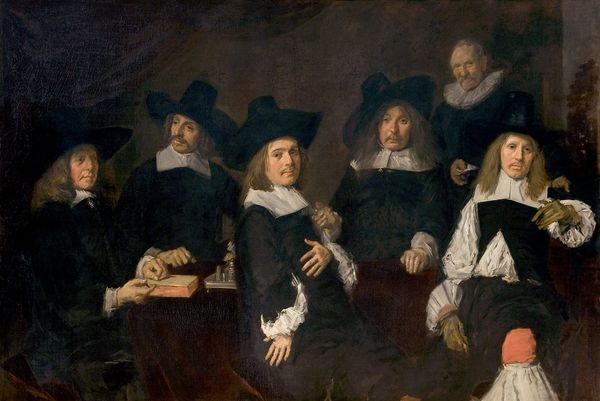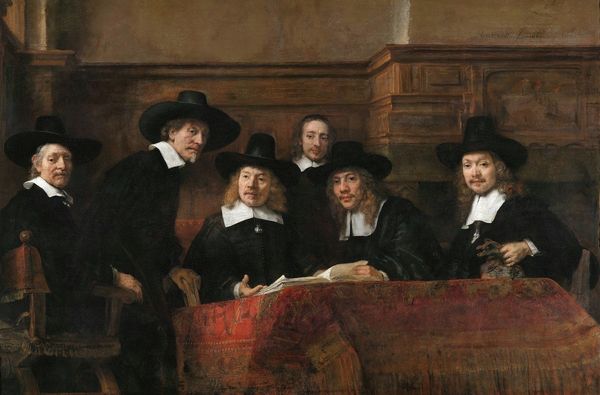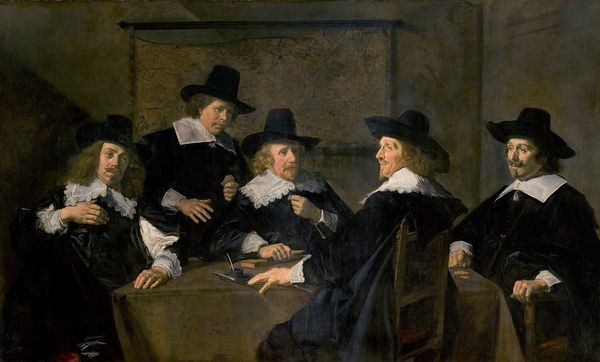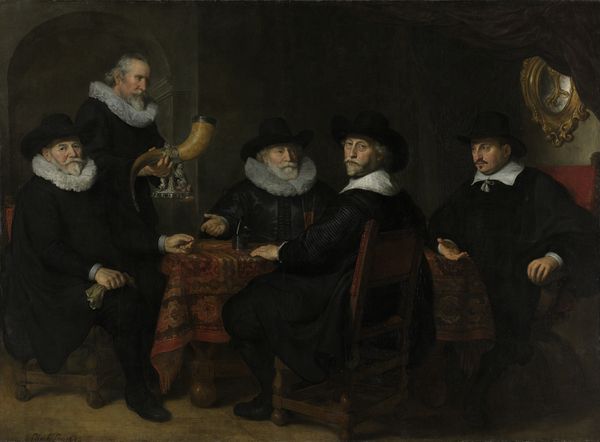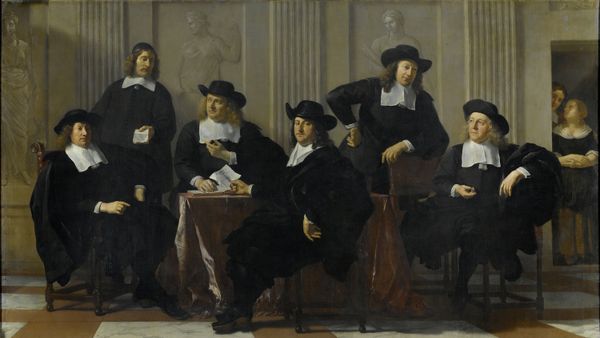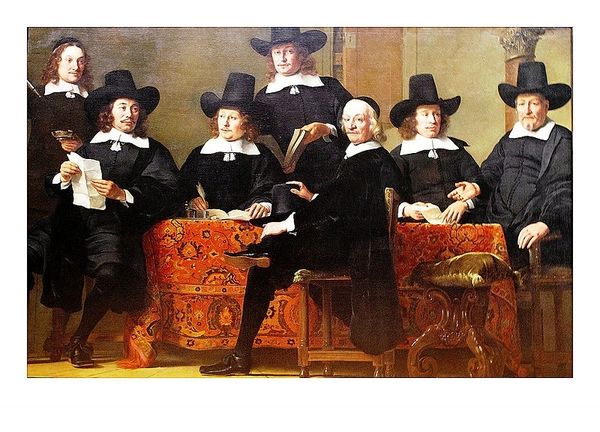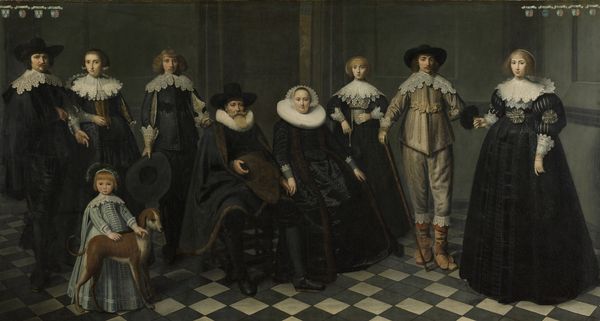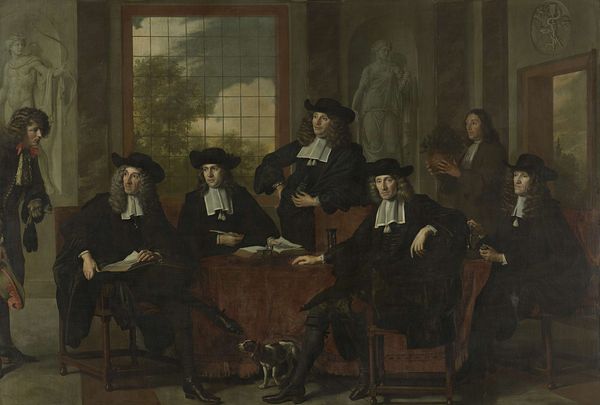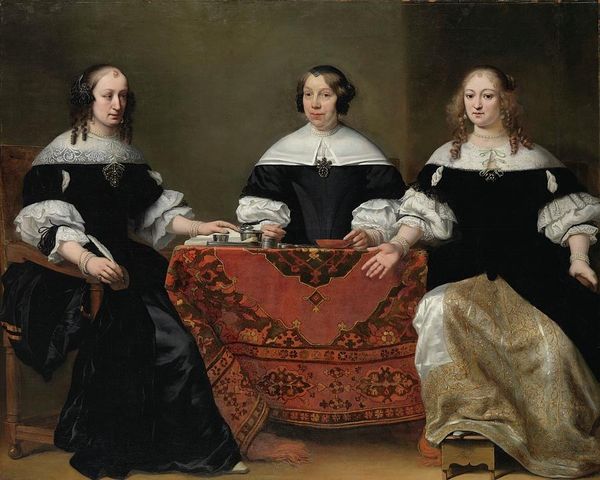
Six Regents and the Beadle of the Nieuwe Zijds Institute for the Outdoor Relief of the Poor 1657
0:00
0:00
painting, oil-paint
#
portrait
#
baroque
#
dutch-golden-age
#
painting
#
oil-paint
#
group-portraits
#
genre-painting
Copyright: Public domain
Curator: Standing before us is Ferdinand Bol’s "Six Regents and the Beadle of the Nieuwe Zijds Institute for the Outdoor Relief of the Poor," an oil painting dating back to 1657, currently residing here at the Rijksmuseum. Editor: My immediate impression is one of subtle power. The muted palette focuses attention directly on the subjects' faces, creating an almost psychological tension. Curator: It's a fantastic example of a Dutch Golden Age group portrait. Bol captures these figures not as archetypes of charity, but as individuals responsible for a crucial social function. The dark clothing, the crisp white collars, speak to the somber dignity expected of their role. Editor: Exactly. And consider the formal arrangement—the figures grouped asymmetrically, anchored by that richly textured table. The restrained use of red draws the eye and suggests perhaps the emotional "heart" of their bureaucratic task. There is a document partially rolled and held firmly in the hand of the front figure, with his assured but unsmiling expression this lends a narrative thread to their assembly. Curator: Indeed. The symbols here speak of their shared responsibility. Notice the man on the left holding a staff; he is the Beadle, the officer ensuring order. And these books, documents, and quill pens stand for written, organized action – a world emerging from personal largesse into systematized giving. They convey concepts that we readily recognize today through entirely visual forms and color choices that reinforce a unified tone, it seems as natural and intuitive now as I suspect it must have done at its inception. Editor: The overall composition almost acts as a microcosm of society, neatly arranging social hierarchies for visual consumption. Even their hats seem to signify their position—each contributing to a complex semiotic interplay. Curator: And despite the inherent formality, Bol allows a touch of humanity. You can sense the subtle differences in character through their gaze and stance, these expressions offering us echoes of the lives they lead away from their philanthropic work. Editor: Well, analyzing Bol’s strategy of formal composition gives another, deeper reading of a traditional scene, helping us to uncover the cultural and personal nuances embedded in his canvas. Curator: It really illustrates how careful attention to both the concrete, and intangible can reveal the rich and deeply connected roots of cultural heritage.
Comments
No comments
Be the first to comment and join the conversation on the ultimate creative platform.
